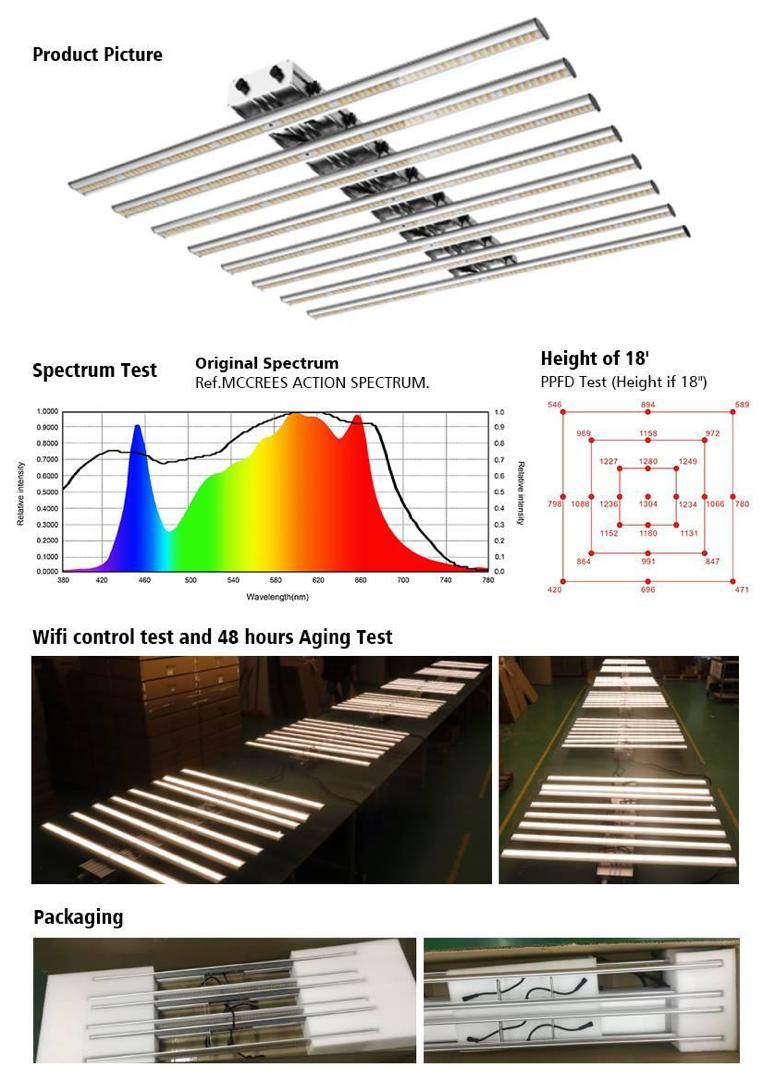
Privacy statement: Your privacy is very important to Us. Our company promises not to disclose your personal information to any external company with out your explicit permission.
As the world of indoor horticulture continues to advance in scale and sophistication, LED lighting manufacturers are deploying a variety of standards and selling points aimed at setting their lights apart from the pack. However, all those complex mathematics really boil down to a few very simple metrics that professional cultivators can use to effectively compare the quality and performance of today`s Led Grow Lights.

Traditional industrial and commercial applications of LED lighting are designed to illuminate a workspace for human activity. This means the only light spectrum that matters is the very narrow central curve perceived by the human eye, which we measure in lumens.

The quantity of available lumens in a given area is an accurate measure of light output and coverage for these applications. However, plants have a very different relationship with light, so our approach to measuring light in horticulture is quite different.
All plants draw their nutrition and growth cues from natural sunlight, and respond to a much broader range of the lighting color spectrum than humans normally perceive. The spectrum of light that affects plant growth lies in the 400 to 700nm range, involving more red and blue on the ends of the spectrum. We call this light Photosynthetically Active Radiation (PAR) due to its active role in photosynthesis.
Most LED Grow Light manufacturers will advertise the PAR levels their fixtures produce, but there are some other key metrics that accompany PAR output that truly separate the common light from a superior LED fixture.
The Metrics of Grow Lighting
For cultivators evaluating the performance standards of today`s most prominent LED Grow Lights, you need to consider two important factors;
• The amount of PAR produced by the light, measured in Photosynthetic Photon Flux (PPF).
• The amount of PAR that actually reaches the plants, measured in Photosynthetic Photon Flux Density (PPFD).
PPF measures and quantifies the amount of PAR emitted by the fixture. This is calculated in micromoles per second (μmol/s) and should be publicly available from the manufacturer. This is an important metric to check when evaluating the value of a given Led Grow Light because PAR is only a slice of the total light produced by a lighting fixture. When your focus is stimulating photosynthesis, PPF is a good indicator of how well a given light will nourish a crop`s growth cycle. High levels of PPF mean the fixture is tuned to produce plenty of PAR and support healthy growth, which is a good sign of return on investment.
PPFD takes this a step further. It`s all well and good to produce a large swath of plant-nourishing PAR, but if the beam spread of the light is a wide scatter-shot approach, only a fraction of that PAR will actually arrive at the plant`s foliage. The rest will spill into the aisles and onto the walls, which is essentially wasted energy. PPFD measures the density of the PAR actually arriving at the plant canopy.
In addition to high PPFD numbers, it`s important that the spread of light across your crop be evenly distributed. Hot spots or dark spots will over-expose or under-expose plants to available PAR and can negatively impact the quality of the overall harvest. This uniformity is a challenge for some LED grow lights, but a few have some interesting innovation in this area.
The LED grow lights produced by Phlizon LED, for example, use precision optics on each diode to focus the beam directionally toward the plants, offering precision uniformity across the entire canopy and thus a healthier overall harvest. Be sure that the PPFD measurements you receive from LED lighting manufacturers are a composite average from multiple points of measurement across the canopy, rather than one from the center alone; otherwise you can`t be sure of this uniformity.
Increase Your Yield by Investing in Advanced LED Grow Lights
In today`s competitive horticulture marketplace, it`s important to maximize your infrastructure to achieve greater yields and improve your ROI. Explore some of the leading suppliers of advanced LED grow lights to squeeze every dollar out of your electricity consumption and every valuable photon from your lights. Today`s lighting technology is breaking valuable ground on efficiency standards and performance results, ultimately helping greenhouse growers bag greater profit margins from their harvests.

Privacy statement: Your privacy is very important to Us. Our company promises not to disclose your personal information to any external company with out your explicit permission.

Fill in more information so that we can get in touch with you faster
Privacy statement: Your privacy is very important to Us. Our company promises not to disclose your personal information to any external company with out your explicit permission.